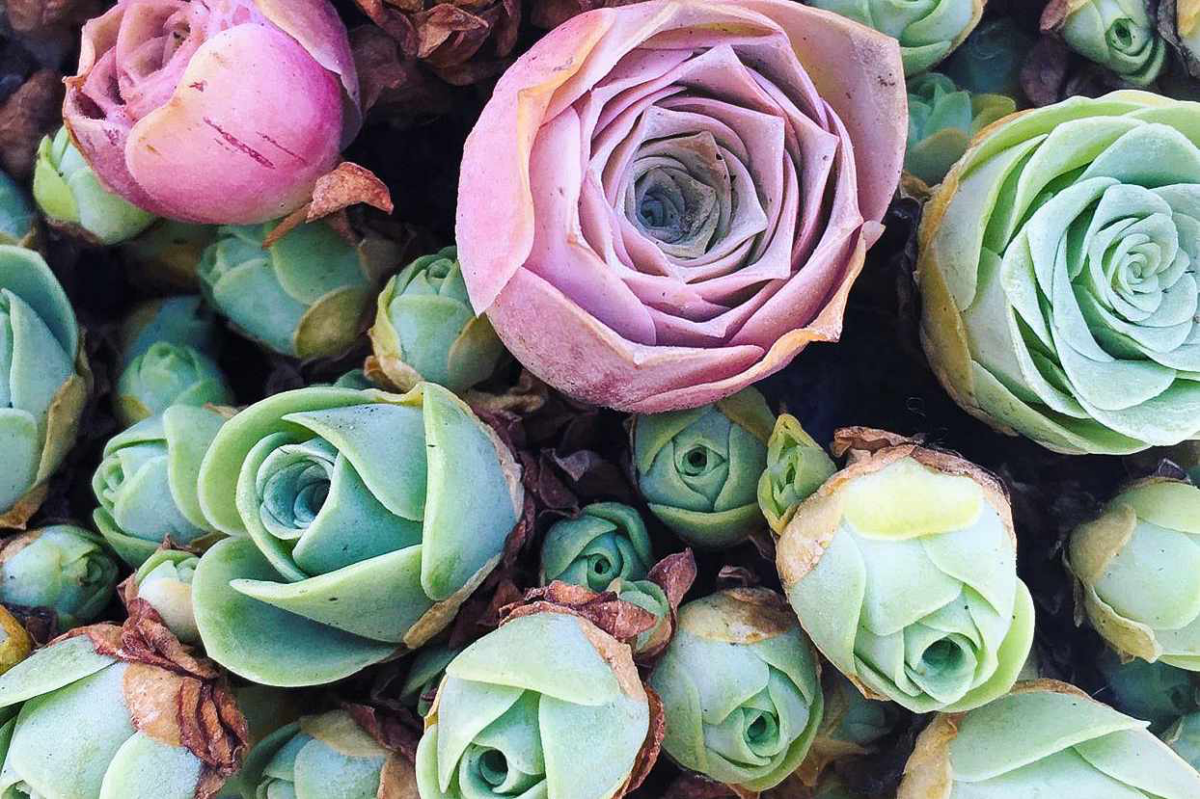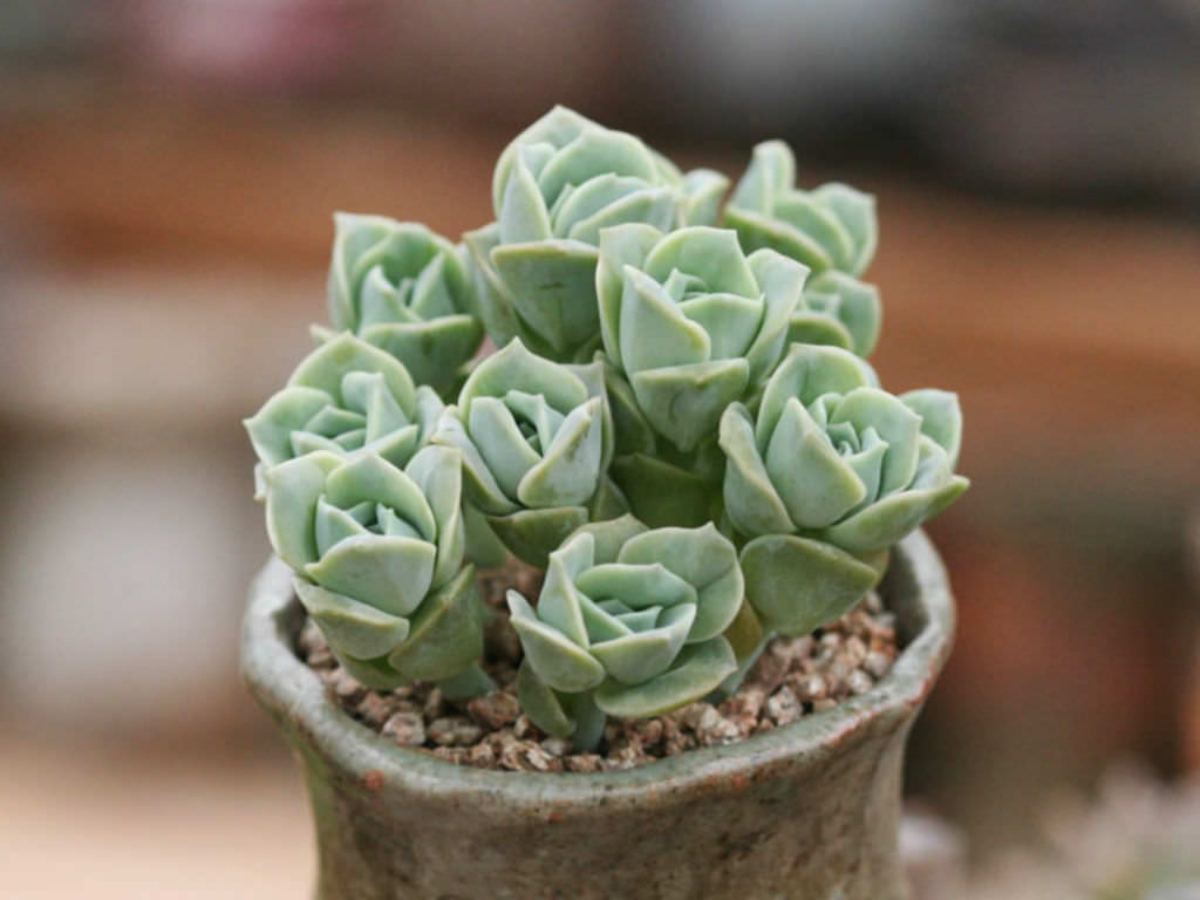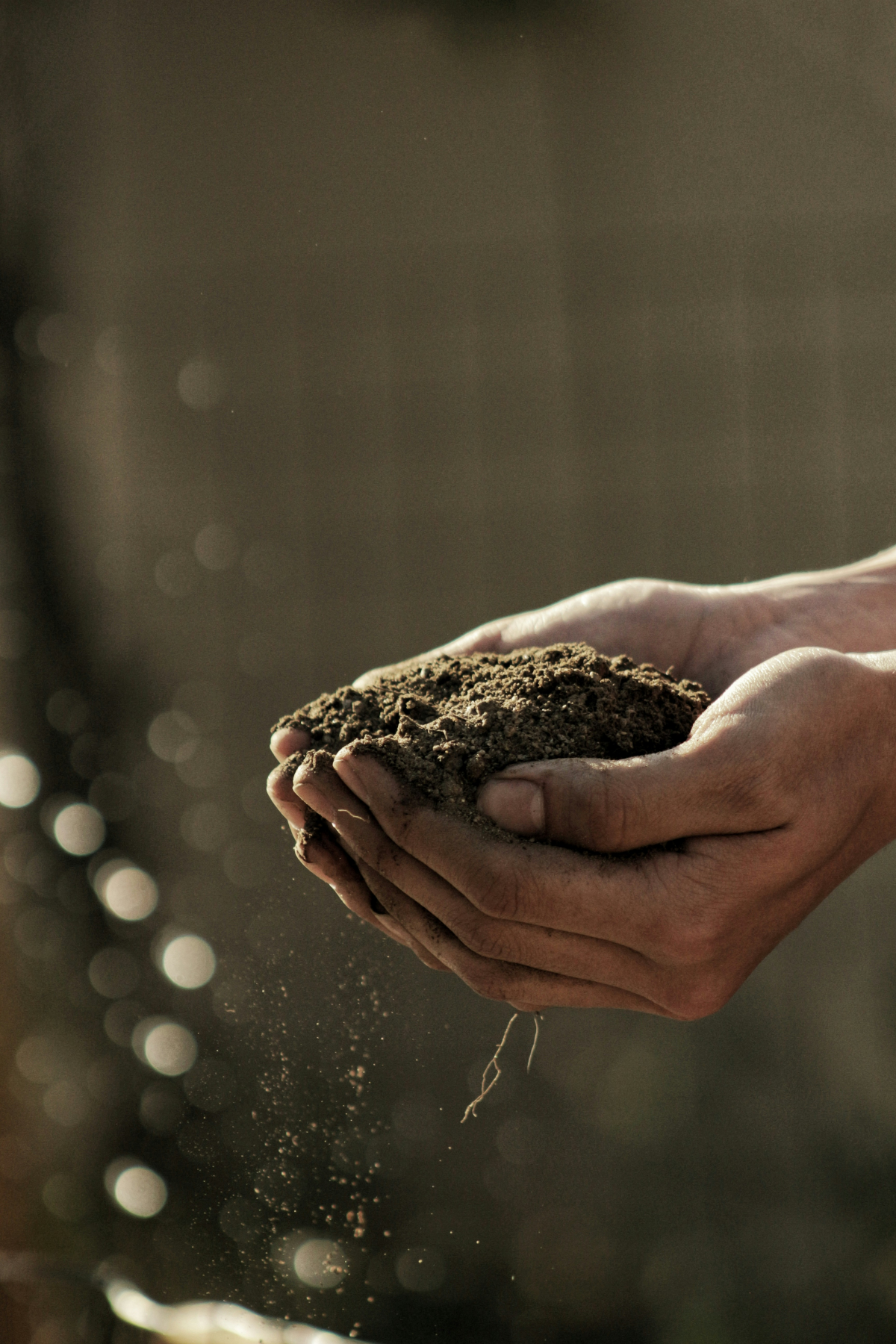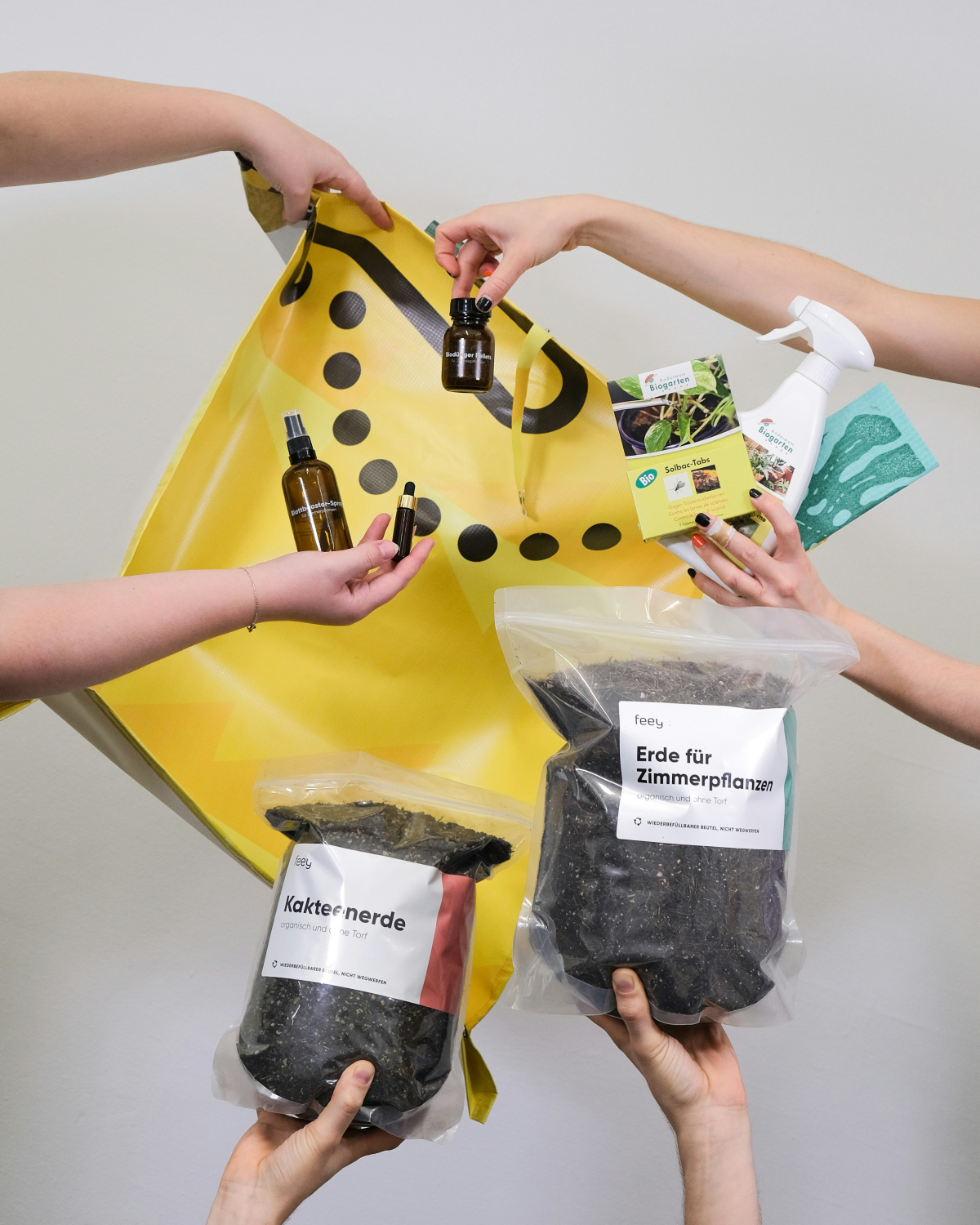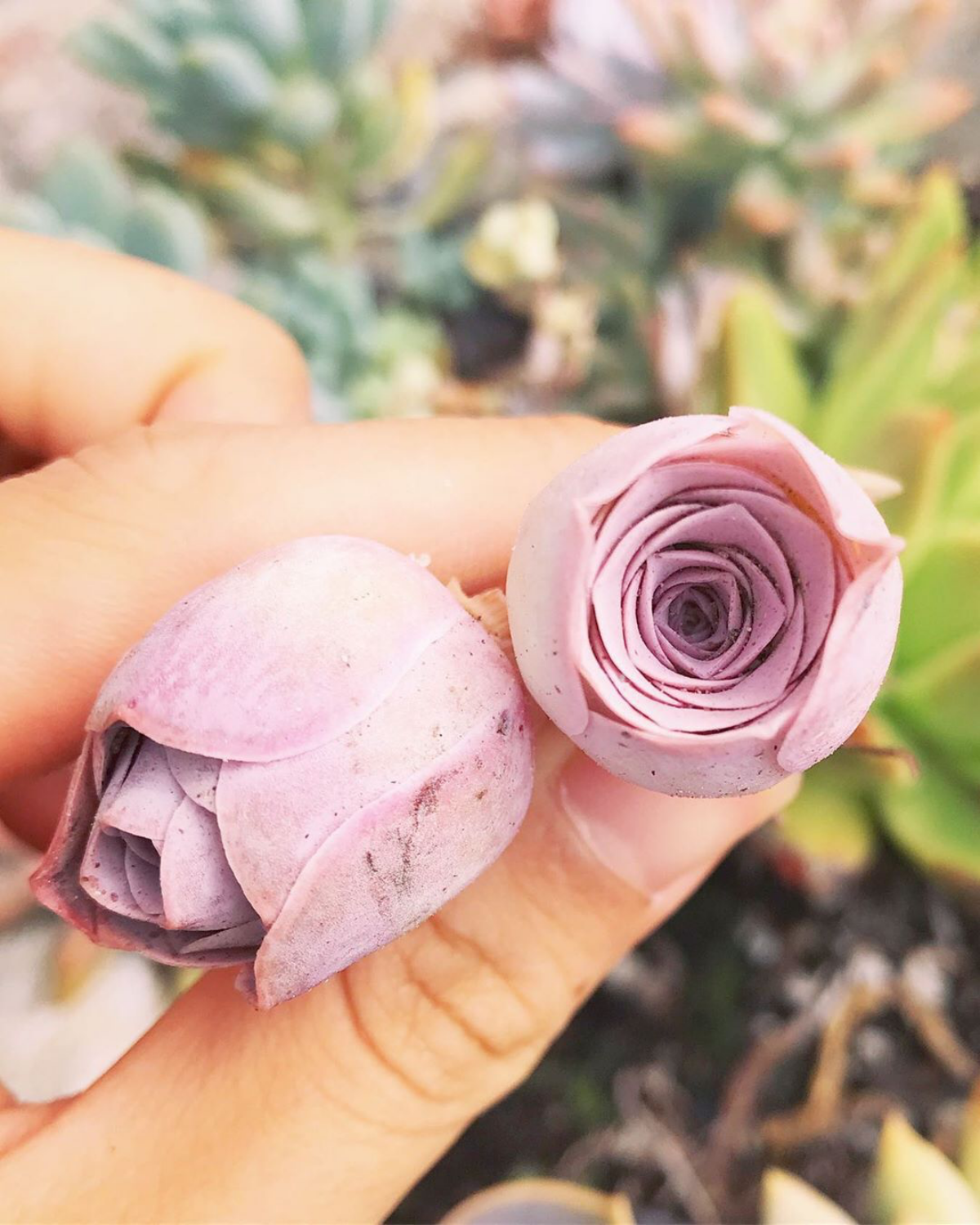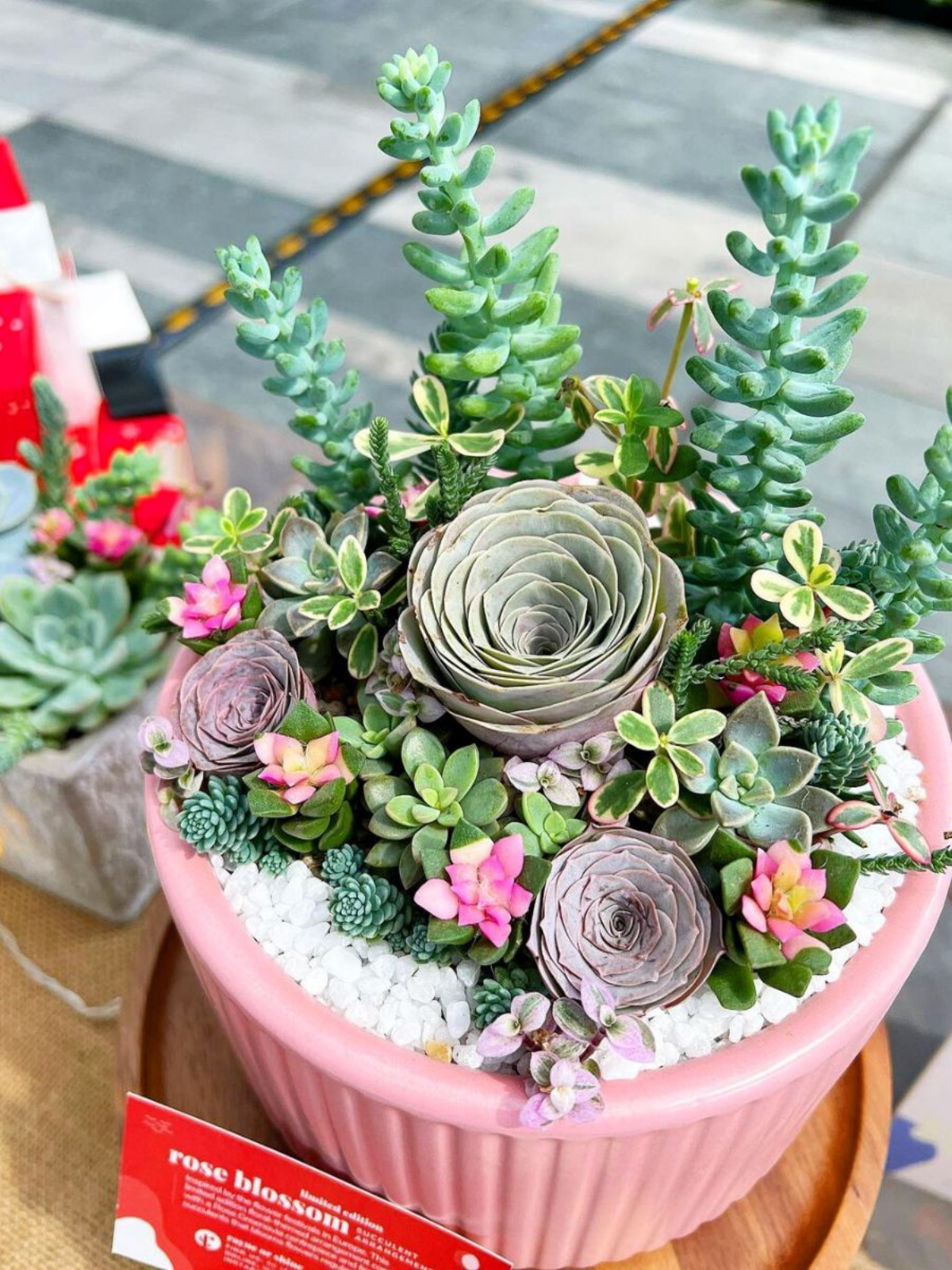How To Nurture And Grow Your Rose Succulent Successfully
Rose succulents stand as a testament to nature’s artistry. Their intricate rosette patterns exude an elegance that elevates them to the status of the succulent world’s crown jewels. These plants are more than just a visual delight. They embody a tranquil beauty. These succulents bring a sense of calm and serenity to their surroundings. Their charm lies in the delicate balance they strike. They are robust yet exquisite, hardy yet enchanting. However, their captivating appearance belies the care and attention they demand. To truly thrive and bring their full beauty to your space, understanding and adhering to their specific care needs is imperative. That’s why today we will share with you how to easily take care of these wonderful plants.
Rose succulents stand as a testament to nature’s artistry
In this article
How To Grow a Rose Succulent
The allure of rose succulents has blossomed in recent years. They are captivating the hearts of both seasoned gardeners and those new to the world of plants. Their rising popularity can be attributed to their stunning visual appeal. Each plant resembles a delicate bouquet of miniature roses, frozen in time. This unique appearance, combined with their versatility, makes them a favorite among interior decorators and gardening enthusiasts alike. Rose succulents adapt effortlessly and enhance any setting they’re placed in. Their ability to fit seamlessly into various décor styles makes them a versatile choice for any plant lover looking to add a touch of nature’s elegance to their space.
Each plant resembles a delicate bouquet of miniature roses
Choose the right location
Rose succulents are particularly fond of bright, indirect sunlight. They flourish in spots where they can bask in the gentle morning sun. But also make sure that they have the protection of dappled shade for the rest of the day. This preference makes them ideal candidates for indoor environments, where lighting conditions can be easily controlled. They favor mild temperatures and moderate humidity levels. On the bright side, these conditions are typical of most indoor settings. Finding the perfect location is crucial. Go for a spot near an east-facing window. There your succulent where they can enjoy the morning light without the harshness of the afternoon sun.
Rose succulents are particularly fond of bright, indirect sunlight
Soil
The foundation of a healthy rose succulent lies in its soil. Well-draining soil is non-negotiable for these plants, as it prevents the dreaded root rot. A mix combining standard potting soil with components like sand or perlite enhances drainage. This mix ensures the roots remain healthy. When choosing a container, opt for one with adequate drainage holes. This not only facilitates proper water flow but also allows the roots to breathe. Repotting your rose succulent every couple of years is a good practice, as it encourages growth and provides fresh nutrients from new soil, keeping the plant vibrant and thriving.
The foundation of a healthy rose succulent lies in its soil
Watering
Watering rose succulents requires a careful balance to ensure their health and vitality. Overwatering is a common pitfall that can lead to root rot. Rot is a detrimental condition for these plants. Conversely, providing too little water can hinder their growth and development. The optimal watering technique is to let the soil dry out completely between waterings, and then water the plant thoroughly. This approach closely mimics the natural, arid conditions in which these succulents typically thrive. Ensuring the soil is dry before watering helps to promote a healthy root system and encourages the plant to grow strong and resilient, reflecting its natural habitat.
Watering rose succulents requires a careful balance to ensure their health and vitality
Feeding
Feeding your rose succulent is an essential part of its care. This is particularly true during its active growing season in the spring and summer. To help your succulent flourish, use a balanced, water-soluble fertilizer once a month. This regular feeding schedule provides the necessary nutrients that might not be sufficiently available in the potting soil. Especially for a plant that is in a controlled indoor environment. The right fertilizer enriches the soil. It supports robust growth and helps your rose succulent to maintain its vibrant appearance and health.
The right fertilizer enriches the soil
Pruning
Pruning plays a vital role in the care of rose succulents. It is essential for maintaining their distinct, compact form and promoting lush growth. The process involves carefully removing any dead leaves and spent blooms, which serves a dual purpose. Firstly, it keeps the plant looking neat and tidy, enhancing its natural beauty. Secondly, and perhaps more importantly, regular pruning helps in preventing the onset of diseases and pest infestations. By periodically trimming away the old and withered parts, you encourage the plant to focus its energy on new growth, leading to a fuller, healthier succulent. This simple yet effective practice is key to keeping your rose succulent in top condition.
Pruning plays a vital role in the care of rose succulents
Maintenance
Vigilance against pests and disease is crucial for the health and longevity of your rose succulent. Regularly inspecting the plant for any signs of distress, such as unusual spotting, wilting, or the presence of pests, is a preventive measure that cannot be overlooked. Early detection is paramount. At the first hint of an issue, taking prompt and appropriate action can save the succulent from severe damage. Whether it’s applying a suitable treatment for pests or addressing a fungal infection. Quick and effective intervention can prevent the problem from escalating.
Vigilance against pests and disease is crucial for the health and longevity of your rose succulent
Propagation
Propagating rose succulents offers a delightful opportunity to expand your collection or share these charming plants with friends and family. The process is straightforward and rewarding. Start by gently removing a healthy leaf from the plant or taking a stem cutting. It’s important to ensure a clean cut to improve the chances of successful rooting. After removing the leaf or cutting, let it dry out for a few days until a callous forms over the cut surface. This step is crucial as it prevents rotting when the cutting is planted. Once calloused, place the cutting in well-draining soil, ideally a mix similar to what your mature succulents thrive in. Patience is key here. With proper care, these cuttings will gradually develop roots and eventually grow into new, independent rose succulents.
Start by gently removing a healthy leaf from the plant or taking a stem cutting
Nurturing rose succulents is a delightful journey, filled with rewards and beauty. By following these care tips, you can ensure your rose succulents not only survive but thrive. Whether you’re a seasoned gardener or a novice plant enthusiast, the joy and satisfaction of growing these exquisite succulents are incomparable. Embrace the process and watch as these splendid plants transform your space and bring a sense of natural elegance to your surroundings.
Nurturing a rose succulent is a delightful journey
